Overview of Organized Crime in East Asia
Contents
In a Hong Kong karaoke bar sit a group of Asian men in colorful suits, leopard print shirts, full body tattoos and big shades, drinking foreign red wine and toking large cigars. They laugh over cheesy Chinese pop songs and speak Cantonese, laden with pale Chinese girls in short skirts. They’re your typical modern Asian gangsters living in the shadows, unlike Latin American cartel dons living in the glitter and the glamour of the limelight.
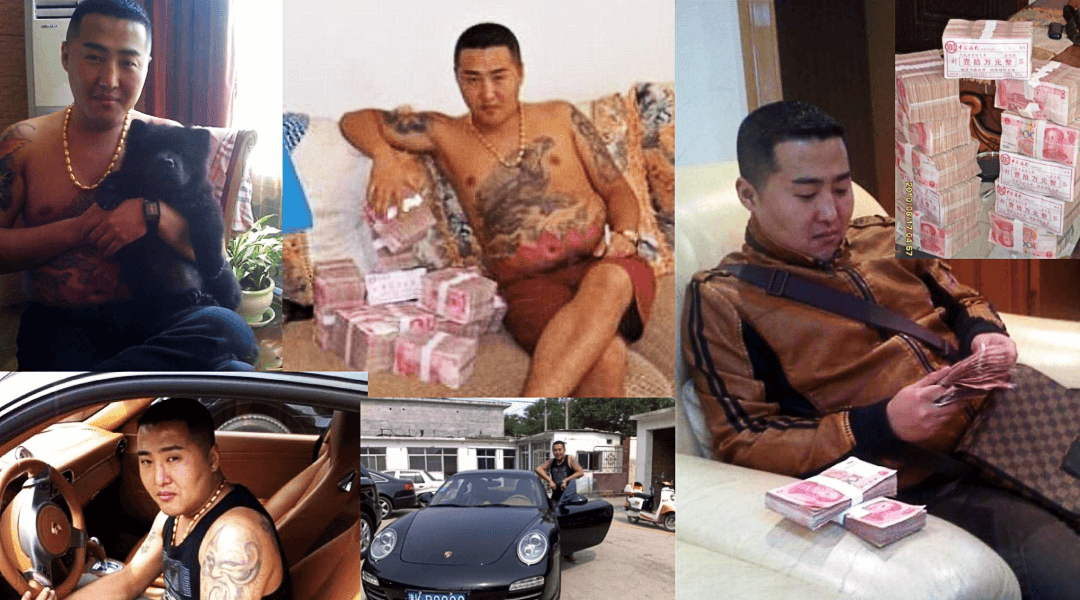 An alleged Chinese mobster had images from his phone leak onto the web flaunting stacks of money, tattoos and luxurious cars.
An alleged Chinese mobster had images from his phone leak onto the web flaunting stacks of money, tattoos and luxurious cars.
In my past two articles I talked about the difference between Chinese triads and tongs, and the origin of tongs in the United States. A frequent question I received in regard to that is what is going on in terms of organized crime in East Asia. Asian organized crime is relatively unbeknownst to the Western world. What criminal organizations exist? What do they do? How are they different from organized crime in the Western world? How do they work together in the region, and how does the region link up on an international scale?
Tony Cheuk is an animator and filmmaker making Super Wok Explosion, a unique animated web-series about Chinese organized crime. On this website, you can find articles about Asian organized crime, Chinese tongs and triads. You can also learn about the universe of the series. If you have an interest in organized crime and would like to learn more about the project, click here!
Organized crime in the Orient
In the west we know such organizations like the Russian mob, the Sicilian mafia and the Mexican Cartels.
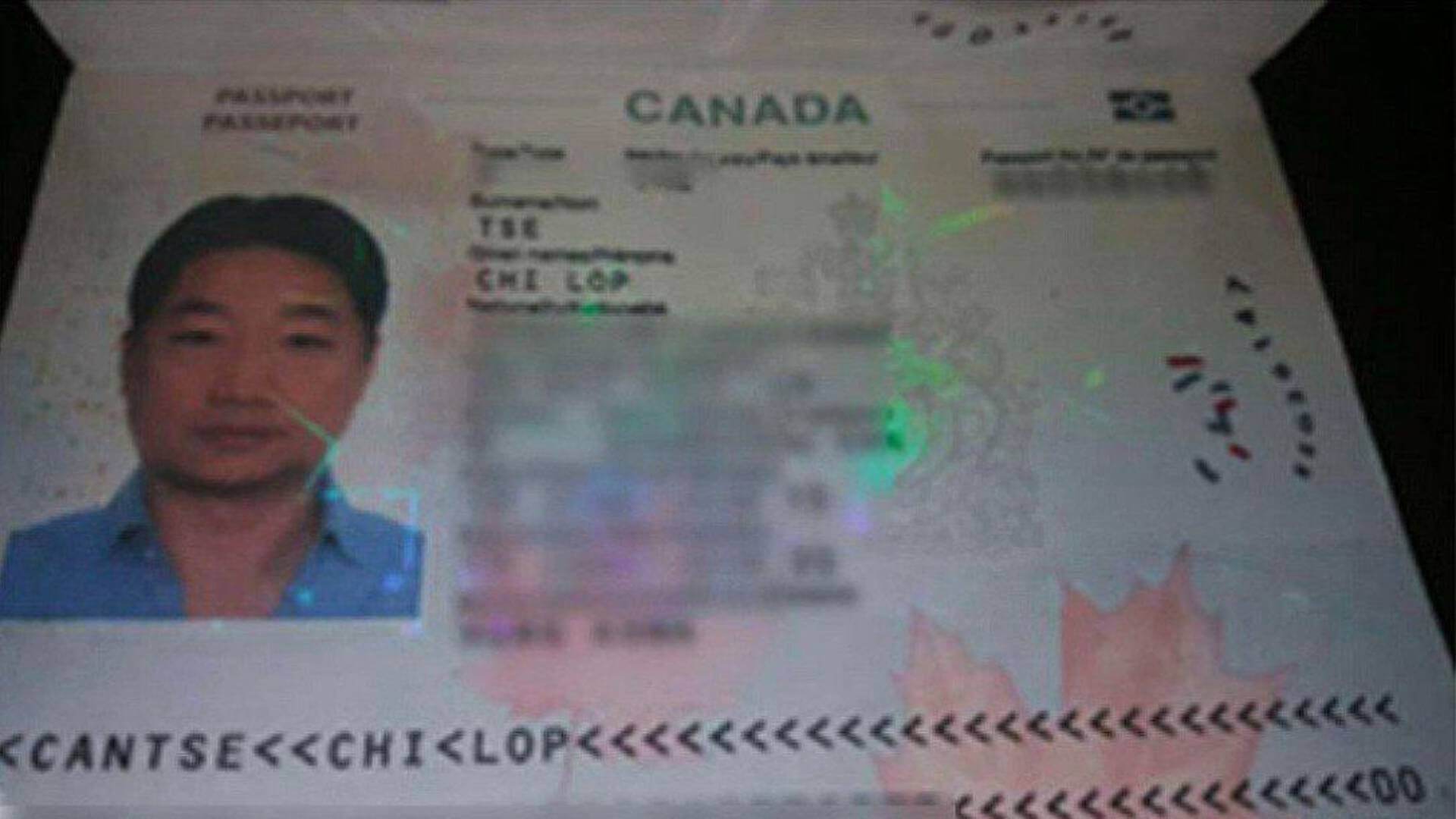 Tse Chi Lop, Asia's Most Wanted Man, is the leader of the Sam Gor triad supersyndicate controlling 50% of the Southeast Asian methamphetamine trade.
Tse Chi Lop, Asia's Most Wanted Man, is the leader of the Sam Gor triad supersyndicate controlling 50% of the Southeast Asian methamphetamine trade.
Tse Chi Lop: Asia’s Most Wanted Man
In 2021, Dutch authorities arrested Tse Chi Lop — a Canadian national believed to be the drug kingpin behind international super syndicate Sam Gor (which is Cantonese for “Brother Number Three”—after the co-founder and right-hand of Khmer Rouge leader Pol Pot, Ieng Sary, who carried the same nickname.
Asian OC and globalization
Asian organized crime has never been this prevalent on an international scale. Like in the historical West, crime revolved around gangs and thugs. But globalization, economical and political changes in the mid-20th century in China and Asia-Pacific created conditions for a new form of organized crime: transnational organized crime.
Transnational organized crime is characterized by cross-border activities. Stiff bureaucracy, tunnel-visioning on economic growth and the flexibility of transnational crime syndicates, has made it insanely hard to combat organized crime.
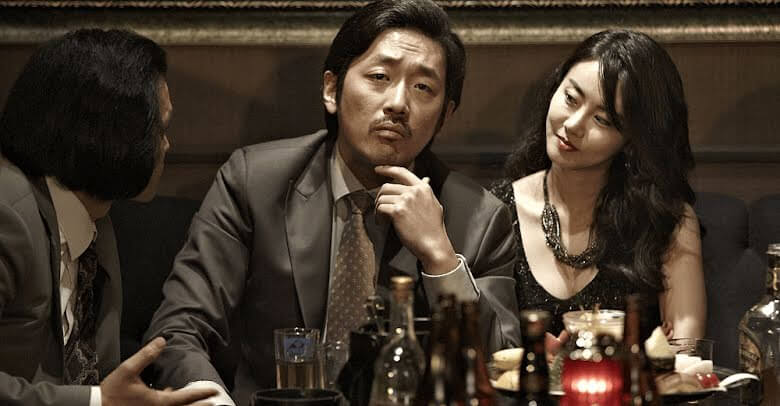 Still of actor Ha Jung-woo in the 2012 South Korean gangster film "Nameless Gangster" about the South Korean government's crackdown on the Korean mafia in the '90s.
Still of actor Ha Jung-woo in the 2012 South Korean gangster film "Nameless Gangster" about the South Korean government's crackdown on the Korean mafia in the '90s.
The idea of the Asian gangster
Prior to the 1950s, there wasn’t one single idea of an Asian gangster. But thanks to cinema, an idea has manifested of Asian gangsters in pop culture as honorable gangsters. Partly romanticized upholders of tradition and a symbol of the conservative right. An influx of Asian gangster movies in ‘70s Korea and Hong Kong gangster films in the ‘80s has reinforced this image. And in an increasingly more uncertain world, it has become more popular.
Spaghetti Westerns have widely drawn on the century-old idea of the Japanese Samurai, further popularized in Japan by Japanese cinema. The Samurai also gained traction in the Western world thanks to directors like Akira Kurosawa. Masterless Ronin who dwelled the country and upheld the law, similarly resulting in the Cowboy archetype as we attribute to the Wild West.
Notable Asian criminal organizations
East Asia has a wide diaspora of Asian criminal groups, but a handful have claimed a leading role in transnational organized crime.
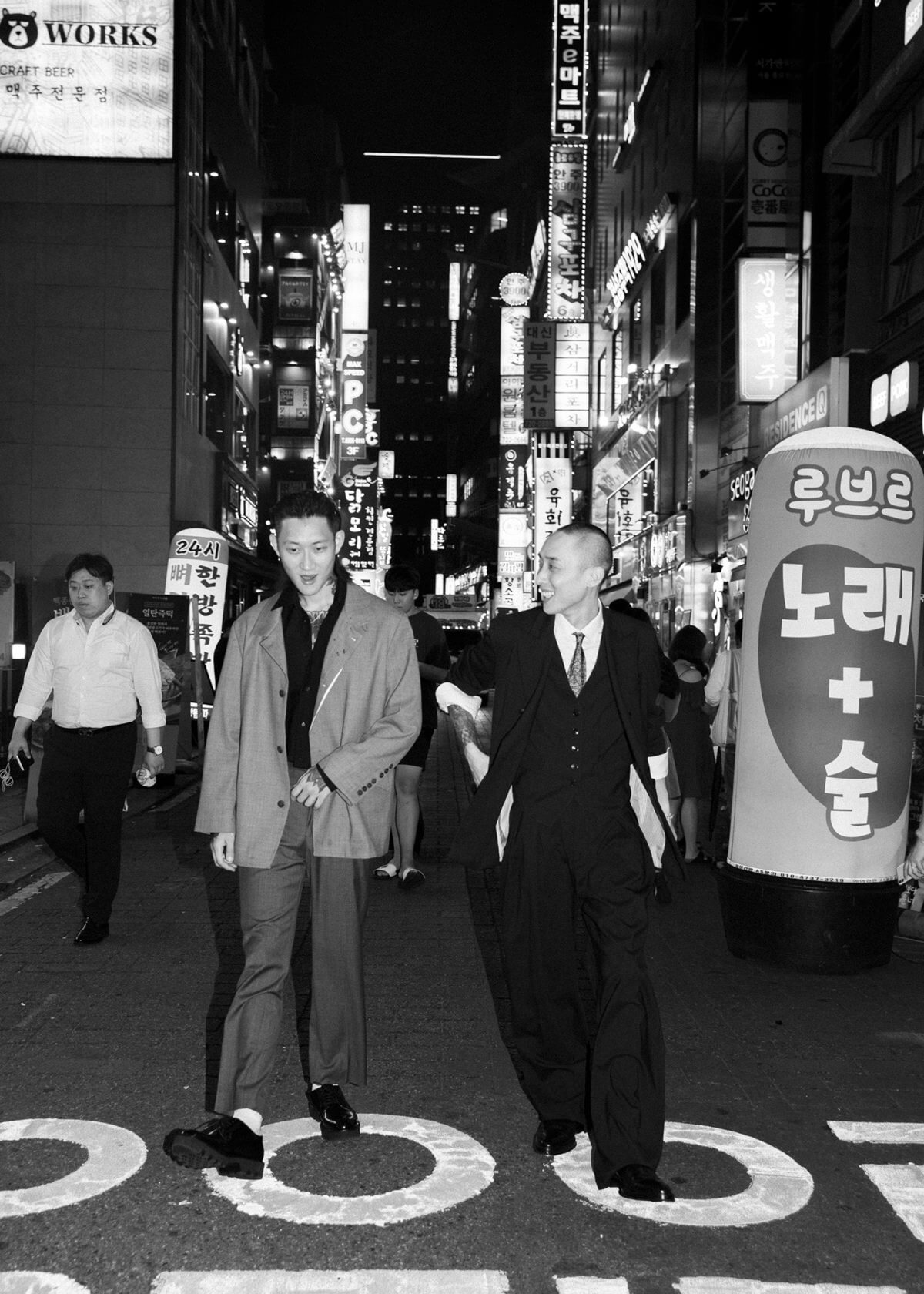 Korean gang members walking in the streets of Seoul.
Korean gang members walking in the streets of Seoul.
Korean Mafia
The Korean Mafia known in Korea itself as Kkangpae can be traced to the country’s historical political situation.
Between 1910 and 1945, Korea was part of the Japanese colonial empire. Facing harsh discrimination from Japanese nationals, Koreans formed into mobs to resist discrimination. They fought the Japanese Yakuza gangs and in the ‘70s organized from street gangs into a more hierarchical organization, becoming the Korean mafia.
The Korean mafia and the Japanese Yakuza are strongly tied together, with a significant part of Yakuza members present-day being of Korean descent.
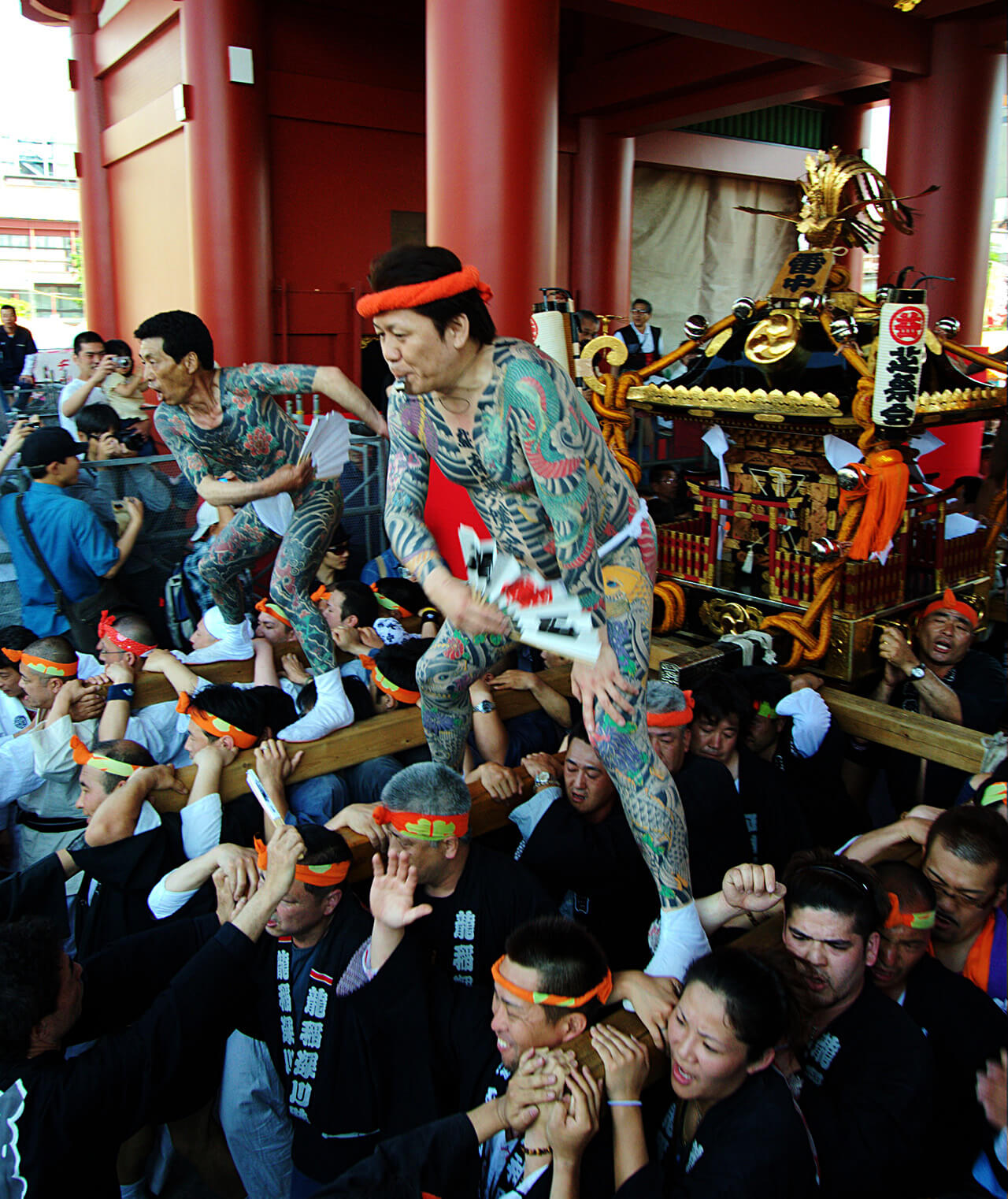 Traditional Japanese tea ceremony with the Yakuza. Traditionally, Yakuza members don full-body tattoos. A recent law prohibits people with full-body tattoos from entering beaches and bathhouses.
Traditional Japanese tea ceremony with the Yakuza. Traditionally, Yakuza members don full-body tattoos. A recent law prohibits people with full-body tattoos from entering beaches and bathhouses.
The Japanese Mafia: The most sophisticated criminal syndicate
The Japanese Mafia or Yakuza can be traced back to Japanese feudal times. The Yakuza is often pictured as men in black suits, white shirts and black ties with shades and rough haircuts. They’re known for having adopted Samurai rituals like ‘yubitsume’, a ritual of cutting off one’s pinky to make up for having disrespected a higher-up.
In Japan, one was born in a certain social group and remained there. Gamblers had a low social status and were regarded with disdain by the rest of society. They formed up in criminal gangs and monopolize the Japanese underworld to this day.
Present-day, they like to identify themselves as chivalrous organizations upholding conservative traditions, historically supported by the political right-wing. Being a Yakuza is often considered more a lifestyle than a membership. But not all aspects of the Yakuza were always illegal.
Yakuza families often have large offices and headquarters with their emblem hanging over their facade. Yakuza membership has decreased. Activities have been largely inward-facing, isolating themselves to the Japanese mainland. But in recent years, the Japanese mafia have become an important axis in the regional drug trade, profiting off the East Asian crystal meth market.
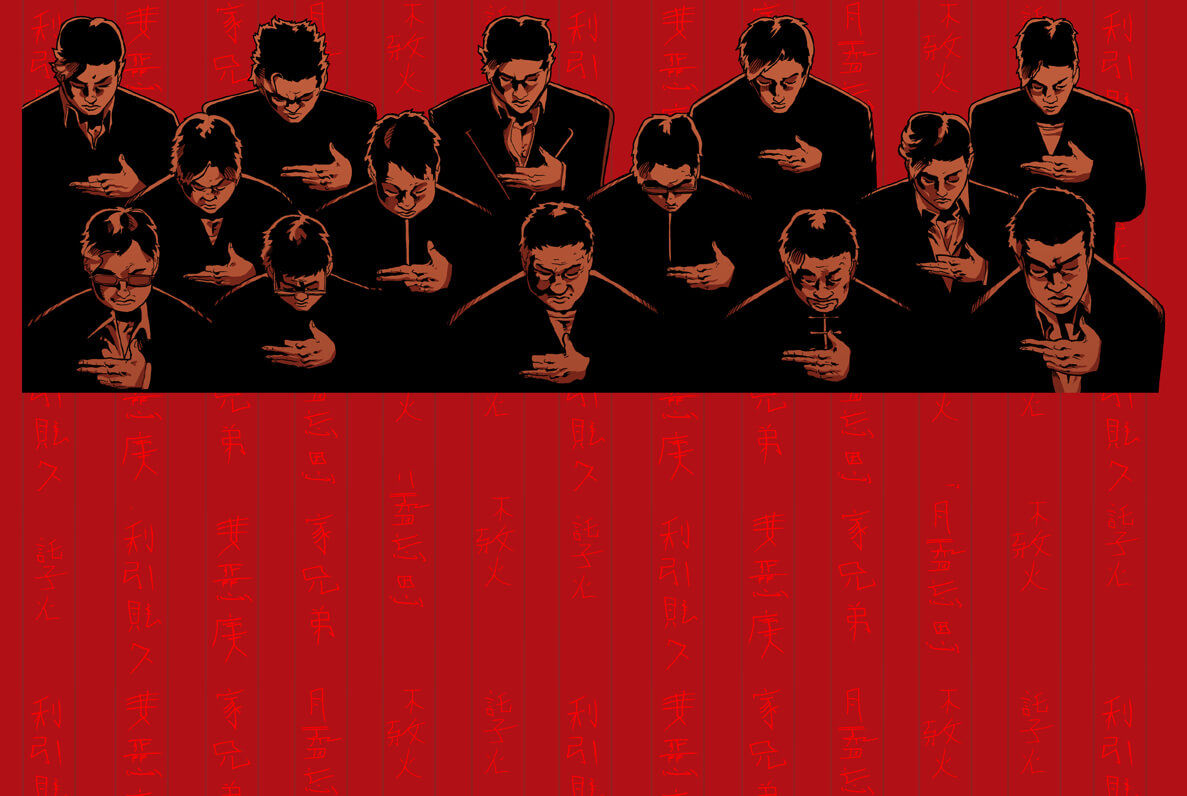 Triads are fraternal brotherhoods; secret societies members are sworn into under a blood oath.
Triads are fraternal brotherhoods; secret societies members are sworn into under a blood oath.
Chinese triads: from religious sect to organized crime
“Triads” are a type of criminal organization unique to China. It’s a catchall term for all sorts of criminal organizations unique to China.
The term was coined by the British colonial government to describe secret societies in Hong Kong and Macau. The word ‘triad’ stems from the “Three Harmonies Society”, an age-old Chinese religious sect resisting the Qing dynasty which has its roots with the Manchurian conquest of China proper.
Notable Chinese triads are the Wo Shing Wo, 14K, Sun Yee On and the younger Big Circle Boys. They’re transnational criminal organizations with a rich basis in former British colonial regions Hong Kong and Macau, but form the apex of Southeast Asian organized crime.
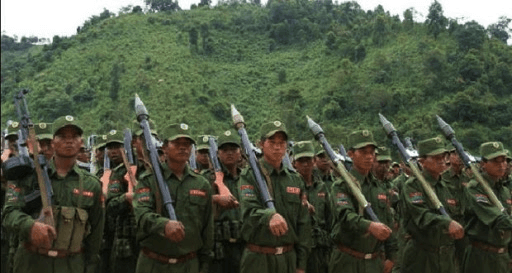 Soldiers of the United Wa State Army marching during a ceremony.
Soldiers of the United Wa State Army marching during a ceremony.
Red Wa: the drug cartel of East Asia
The Red Wa is a criminal syndicate home to Myanmar which is responsible for a large portion of the crystal meth trade in East Asia. It’s an armed militia active in “Shan state”, a region in eastern Myanmar over which the Myanmarese government has no control.
The Red Wa is a residue of the Shan Rebel army, a fringe group of the Communist Party of Burma (Myanmar). The organization spans a complex political history dating back to the Vietnam War and French colonial rule.
Present-day, the United Wa State army actively works with Chinese crime groups. Before the Afghan war, the Red Wa were the largest producers of heroin in the world, now second to Afghanistan.
The end of the Chinese civil war and Mao Zedong's purge of the opioid crisis has been a catalyst for the Red Wa’s dominant position. Many of the dons carry the Chinese nationality.
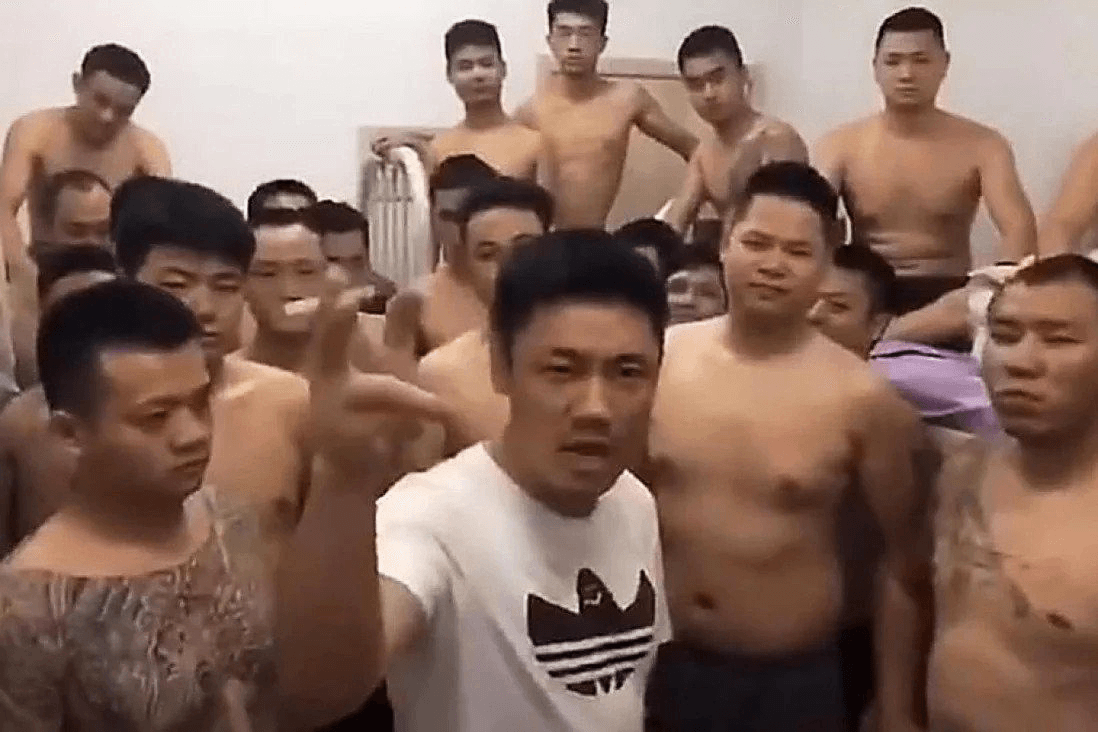 A group of Chinese triad members acting tough in an online video.
A group of Chinese triad members acting tough in an online video.
Characteristics of Asian Criminal Organizations
What makes organized crime in East Asia different from the west is that in the past organized crime was dominated by armed militias who were the spider in the web of illicit activities, rather than clan families.
Asian organized crime networks are very decentralized. Asian society is characterized by community, unions and family ties, which is also attributed to Asian organized crime. Rather than family clans such as with the Sicilian mafia, Asian organized crime is a network tied together by individual interests and dependency. Hierarchies don’t come together to one powerful ‘don’.
Asian groups function less as a hierarchy — like you see with the Latin Americans — and more as a network of common interests. In other words, make profits, keep your profile low and spread the talent around
Notable regions of crime
Organized crime in East Asia is widespread both on the Chinese mainland, as well as in Southeast Asia. However, the region knows several notorious nodes for organized criminal activity.
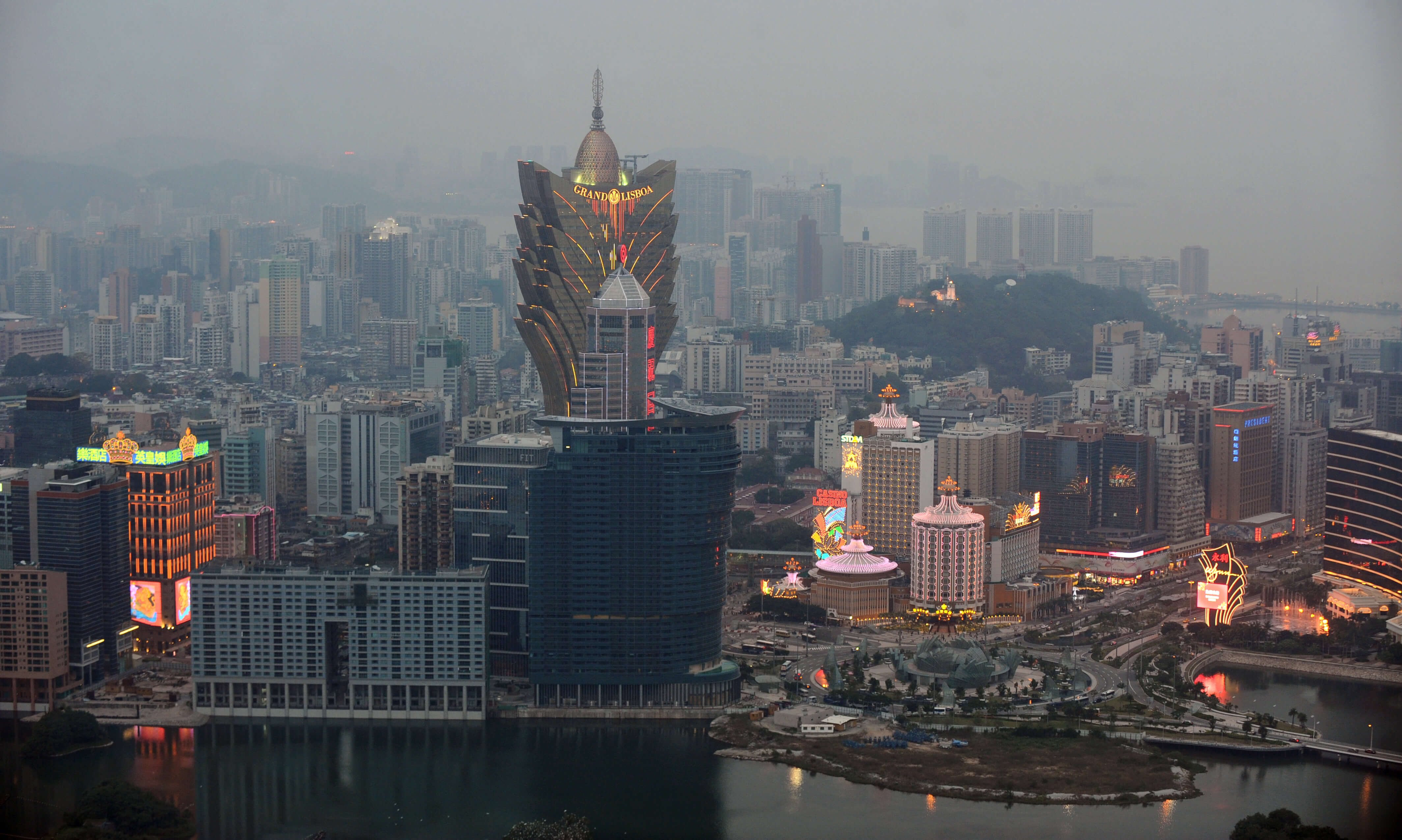 A photograph of the Macau skyline in which the iconic Grand Lisboa casino is visibly towering over the casino district.
A photograph of the Macau skyline in which the iconic Grand Lisboa casino is visibly towering over the casino district.
Macau: The Las Vegas of the Orient
Hong Kong and Macau are both important crime capitals in Asia. They’re the homes of the ever-dominant Chinese triads. Money made in the Asian drug trade is laundered through casinos, condos and cryptocurrency. In turn, Macau is the money-laundering capital of the world. It’s a city chock-full of casinos; the Las Vegas of The Orient.
A whopping 70% of all money laundered world-wide is believed to be done through Macau, which is thanks to lenient gambling policies. In order to circumvent Chinese tax laws, prohibiting large amounts of money from moving outside the country, money is ferried across borders and withdrawn in USD through Macau casinos, and then invested in foreign property in the US or Canada or parked in offshore tax havens.
The story of Super Wok Explosion revolves around a looming power struggle within the Wo On Lok triad, which is based in Macau. If you have an interest in organized crime and would like to learn more about the project, click here!
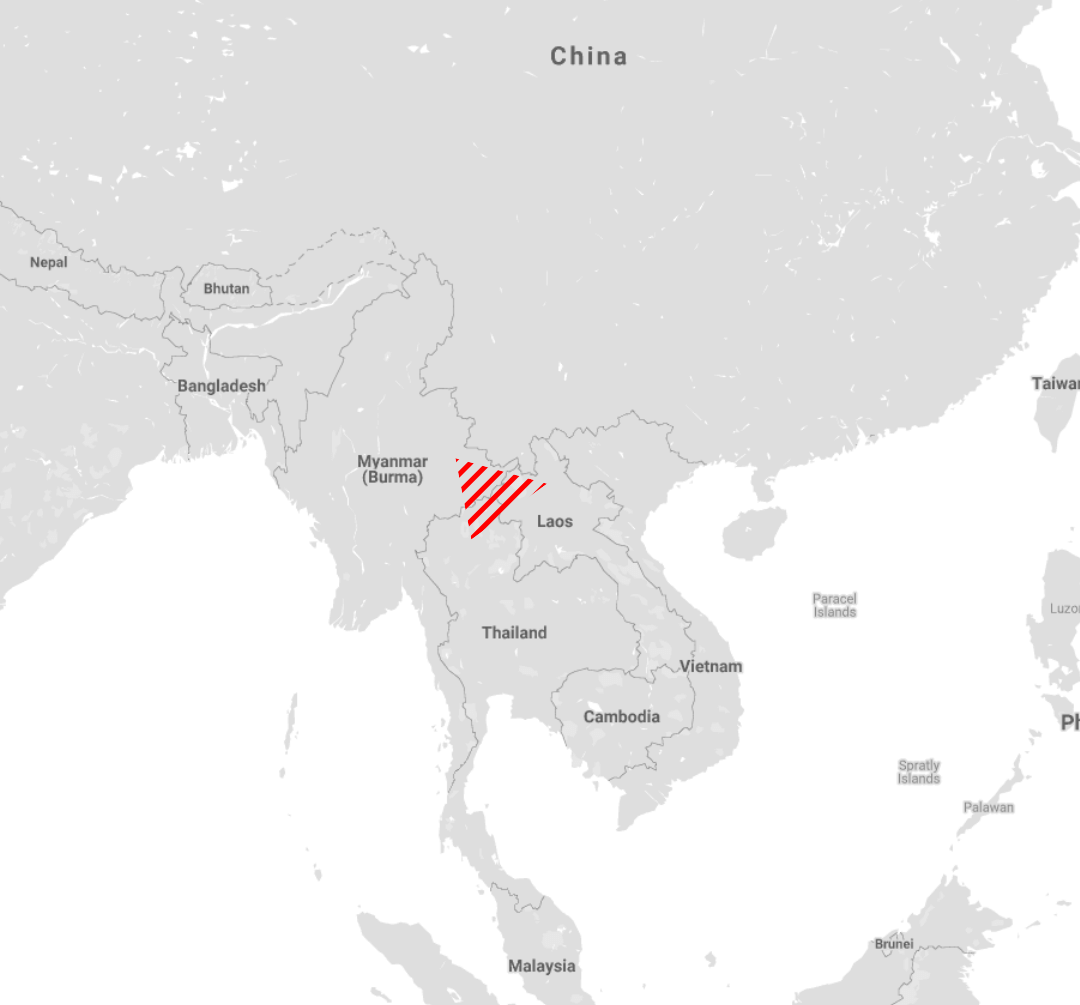 The Golden Triangle is the place where the borders of Laos, Myanmar and Thailand meet. It's a no-man's land where armed militias make out the rules.
The Golden Triangle is the place where the borders of Laos, Myanmar and Thailand meet. It's a no-man's land where armed militias make out the rules.
Golden Triangle
The Golden Triangle is the place where the borders of Thailand, Laos and Myanmar meet. It’s a no-mans land where national governments have little control, and armed militias run the ins and outs of society.
While the Golden Triangle is one of the key origins of heroin in the 21st century, prior to the Afghan war, the Golden Triangle was the largest producer of opioids.
But it wasn’t always like this.
 Photograph made during the Chinese Cultural Revolution. A son is persecuted by a mob for defending his father.
Photograph made during the Chinese Cultural Revolution. A son is persecuted by a mob for defending his father.
The Chinese Civil War
Prior to the 1950s, China faced the opium crisis. A sizable amount of the Chinese population was addicted to opium. Due to the country’s weak economical state, for a time in the 1880s, opium was even used as a currency.
However, after the Chinese Civil War in the 1950s, the Chinese Communist party under leadership of Mao Zedong, executed drug traffickers and detained drug addicts. Opium production was expelled to the Golden Triangle.
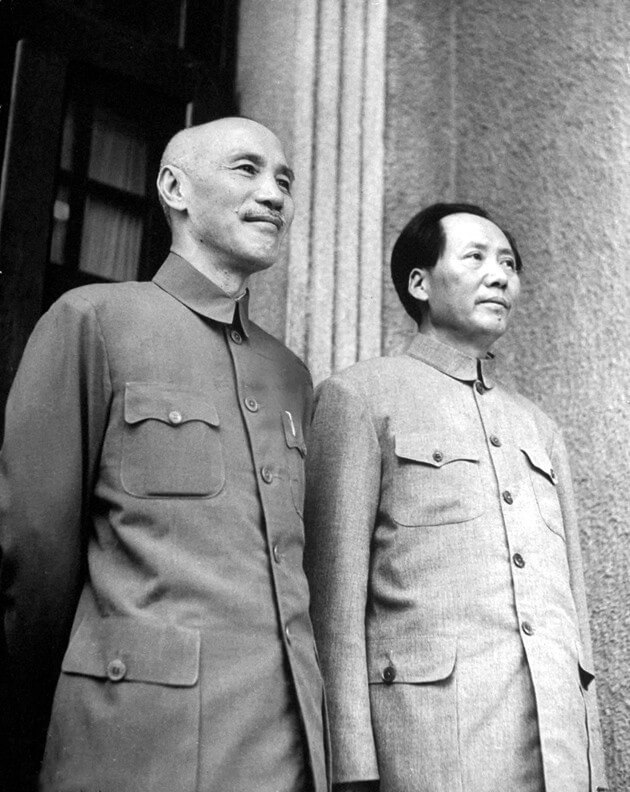 Chiang Kai-shek (left) and Mao Zedong (right) meet during a party convention prior to the Civil War. Chiang and Mao met four times.
Chiang Kai-shek (left) and Mao Zedong (right) meet during a party convention prior to the Civil War. Chiang and Mao met four times.
Kuomintang
The Chinese Nationalists — or Kuomintang — who were defeated by the Communists retreated across the border into the Golden Triangle. After the Kuomintang’s funding was cut by the Taiwan government, soldiers sought different means of funding. They ended up relying on money from the opium trade to operate a foreign armed resistance.
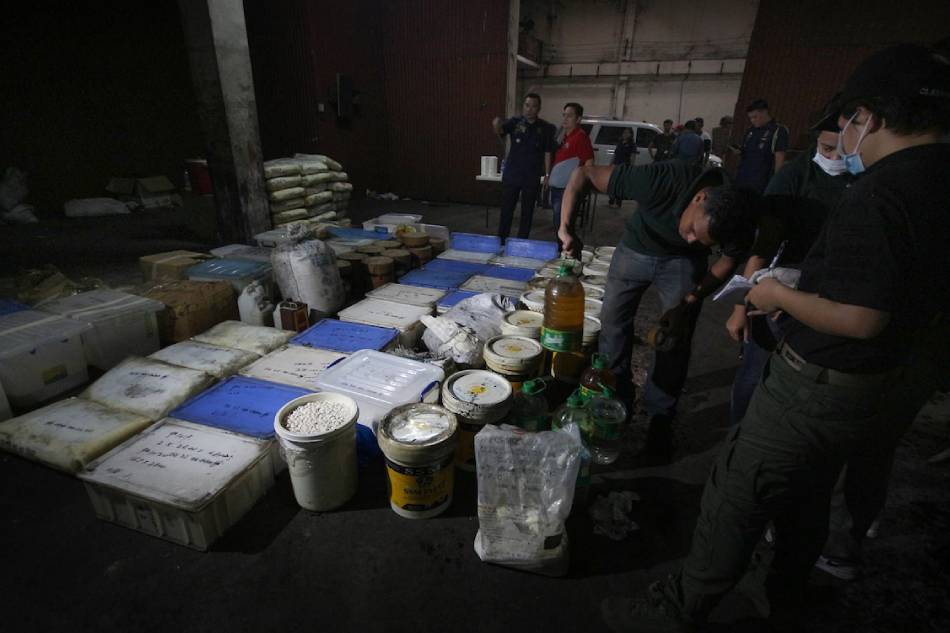 Thai law enforcement seize a meth lab in the Golden Triangle where precursor chemicals are produced for methamphetamine production.
Thai law enforcement seize a meth lab in the Golden Triangle where precursor chemicals are produced for methamphetamine production.
The Opium Epidemic
At the peak of the opium epidemic, in the 1960s, 20% of Vietnam soldiers regarded themselves addicted to heroin.
The Vietnam War has also turned Pattaya from a fishing village into a hub for the sex market. It’s Thailand’s hotbed for sex tourism.
Thailand is the Asia-Pacific Nasdaq for drugs. It’s where the negotiations in the narcotics market are done because it is the closest to production.
Organized crime in the region
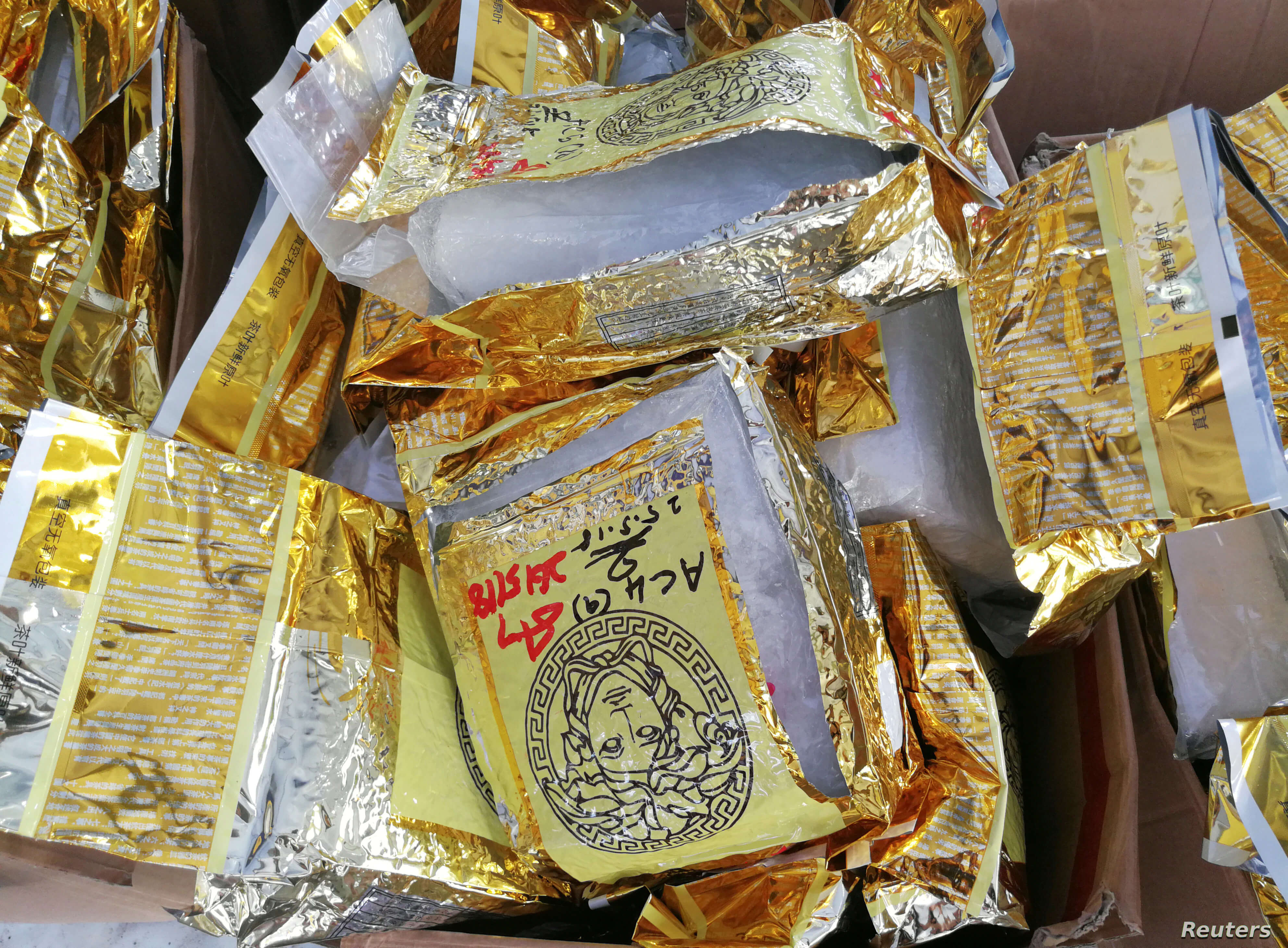 Sam Gor’s signature tea packets to smuggle crystal meth as a signature quality brand.
Sam Gor’s signature tea packets to smuggle crystal meth as a signature quality brand.
From Heroin to Crystal Meth
Thus, after the 1967 opium war, the Red Wa gained a foothold in the Golden Triangle. The Red Wa were responsible for the production of heroin. The Chinese handle the export from the region into the most important markets such as the United States, Japan, Australia and New Zealand.
Attempts by law enforcement have been made to quell the production of heroin in the region. But each time, activity across the border into Thailand and Laos and back.
Large seizures of poppy fields have caused many farmers to seek out new sources of income. With the cheap availability of precursor chemicals from China and a high retail price, production has shifted to meth production.
The wholesale price in Myanmar is 1,800 USD per kilo of meth, while the retail price ranges from $70,500 in Thailand to as high as $588,000 in Japan. That’s a more than three hundred-fold mark-up.
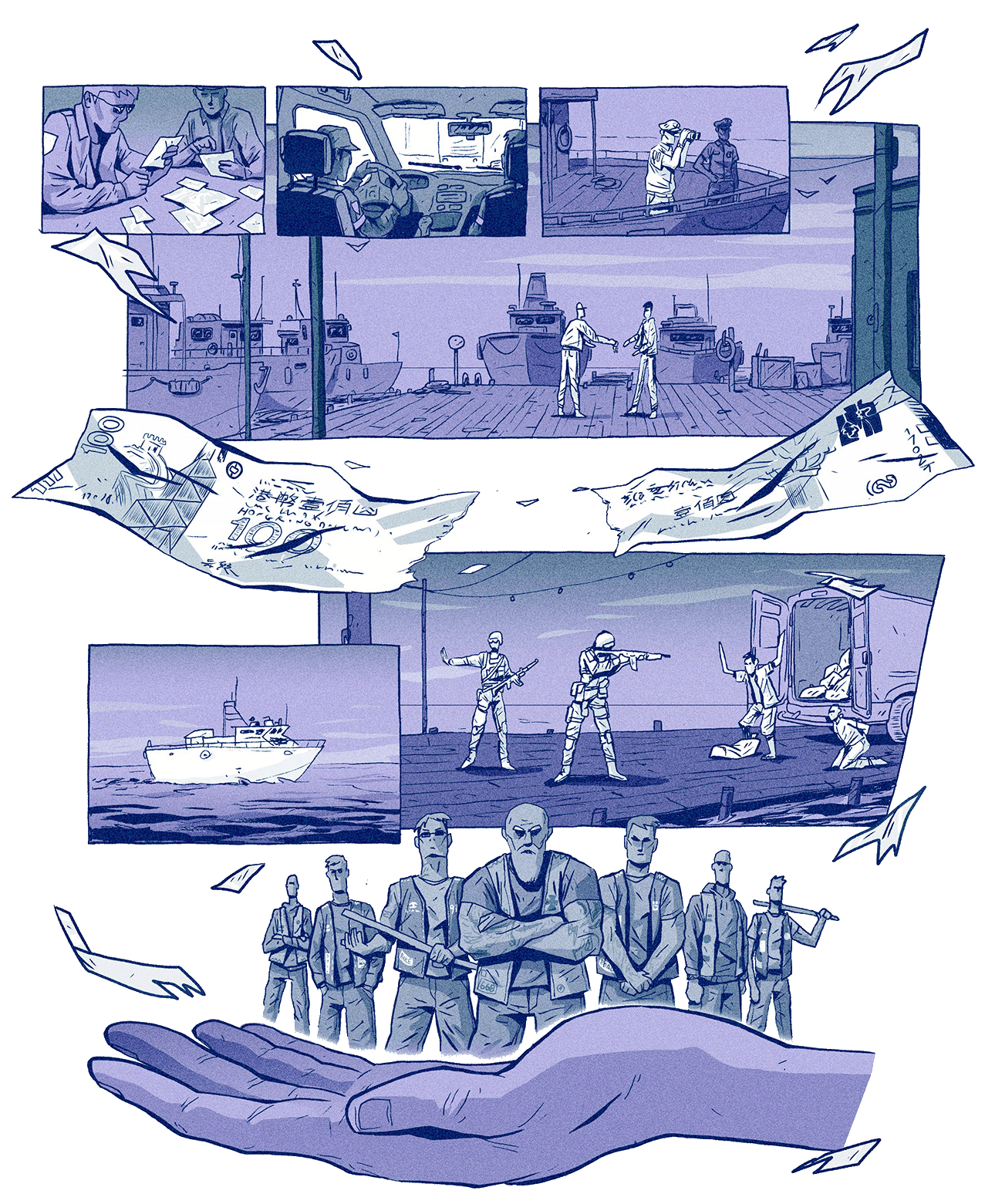 © Ben Bauchau
© Ben Bauchau
Meth is different from heroin because it is less labor intensive, requires less laborers, resources are cheaper and it doesn’t require a large workforce or area for production. The price per kilo is also higher, making profits far, far higher and ramping up profits for Chinese crime groups.
Meth lab managers and laborers are often Taiwan nationals. They dress better than the locals, have foreign accents and have a rank chemical smell, say locals. “Their signature smell gives away their activities”.
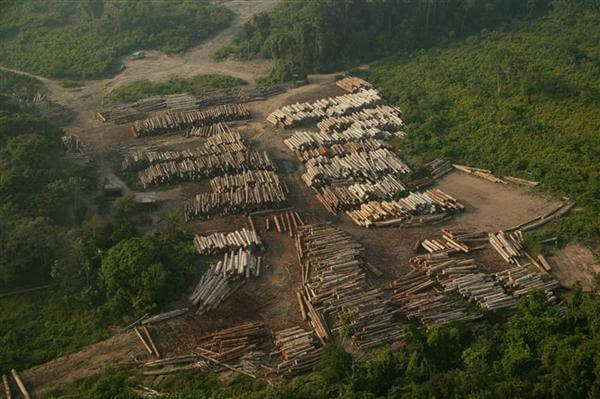 Illegal logging activities in Southeast Asia have surged following a trend of an increased demand for woods for furniture in the West.
Illegal logging activities in Southeast Asia have surged following a trend of an increased demand for woods for furniture in the West.
Illegal timber logging
Besides the drug trade, illegal timber logging has become a lucrative industry following the increasing demand of timber to wealthier parts of the world for furniture manufacturing.
Illegal timber logging is popular because it is easy to create fraudulent documentation, causing it to be relatively low-risk. Illegal logging is rarely done by shadowy loggers. Rather, established companies with big names otherwise involved in clandestine activities involve themselves in bribery for permits, logging without permits or logging protected species.
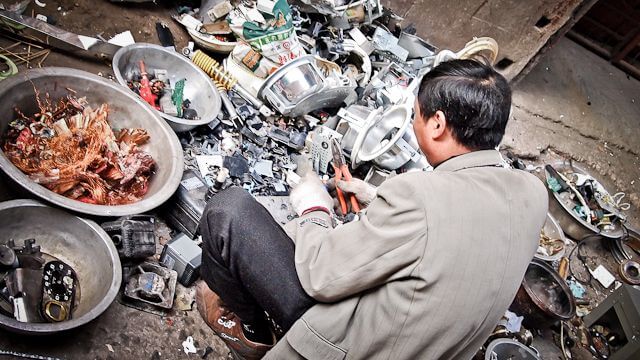 Electronic waste with rare metals is imported into Southeast Asia where valuable, toxic rare metals are extracted often by hand by poor laborers.
Electronic waste with rare metals is imported into Southeast Asia where valuable, toxic rare metals are extracted often by hand by poor laborers.
Electronic waste
A newly developed market that has ramped up in the 21st century is the import of electronic waste from the West.
In the UK, for the safe extraction of lead from electronics, 200% to 400% can be saved by exporting the waste illegally to East Asia. For Western companies, the illegal export of e-waste to East-Asia can thus result in significant savings. The electronic waste market is driven by the low amount of container goods transported back to China. Empty containers are filled with e-waste and transported from whence they came.
 Heroin and methamphetamine is produced in the Golden Triangle and then smuggled to the Eastern corners of the world. Important destinations are Australia, New Zealand, the Asia Pacific but also China, Canada and the United States.
Heroin and methamphetamine is produced in the Golden Triangle and then smuggled to the Eastern corners of the world. Important destinations are Australia, New Zealand, the Asia Pacific but also China, Canada and the United States.
How Asia-Pacific relates to the world
China is the largest producer of precursor chemicals for heroin and methamphetamine in the world. The vast majority of resources used in heroin and meth production facilities in the Golden Triangle originate from Chinese export. Even the Latin American cocaine market is driven by Chinese precursor chemical export, making it the largest exporter of synthetic drugs.
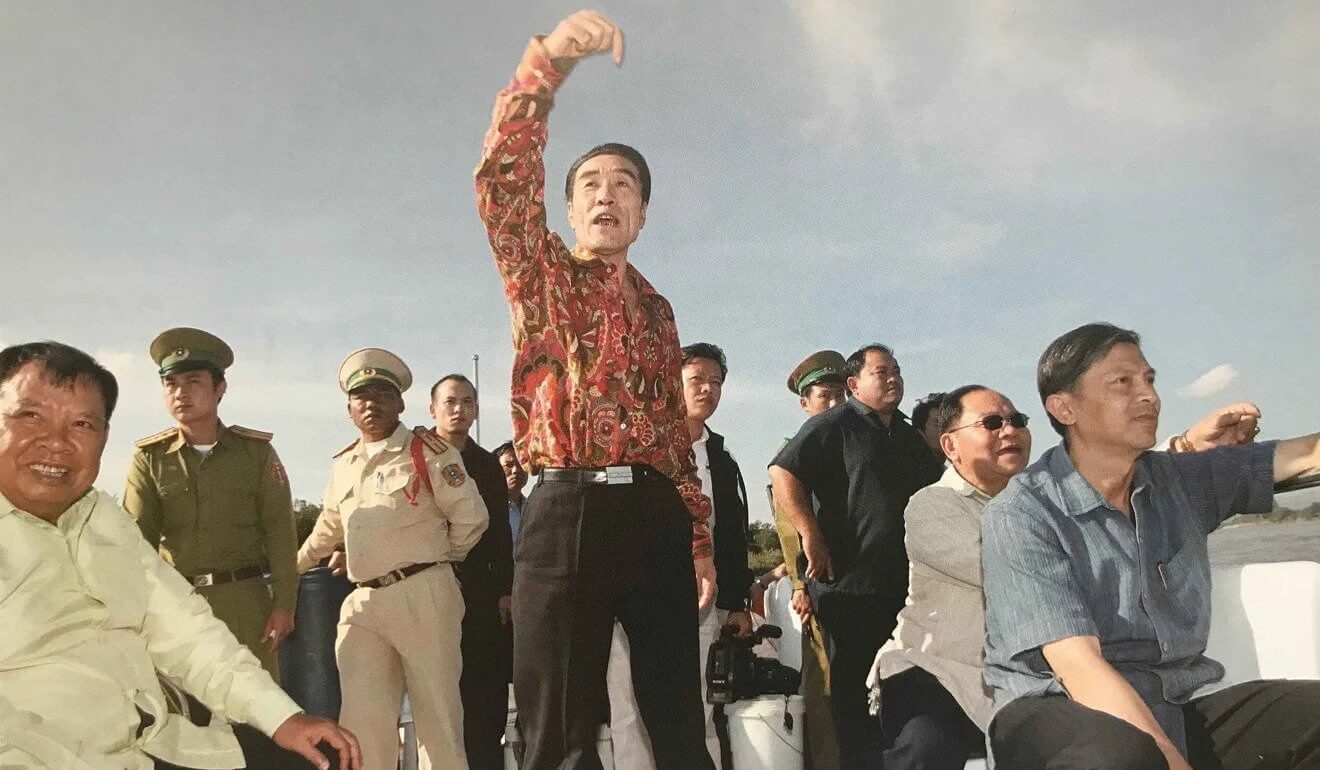 Chinese national Zhao Wei is a Laotian casino kingpin — who is also a drug kingpin sanctioned by the US Treasury for money laundering and narcotics trafficking. He's also believed to be involved in human smuggling and wildlife trafficking.
Chinese national Zhao Wei is a Laotian casino kingpin — who is also a drug kingpin sanctioned by the US Treasury for money laundering and narcotics trafficking. He's also believed to be involved in human smuggling and wildlife trafficking.
For the Golden Triangle, China functions as a key transit route into other international drug markets. The “one belt, one road” initiative has caused a good infrastructure with many maritime harbors, allowing for easy maritime transport to the rest of the world and the east.
In 2019, meth has surged sevenfold in Southeast Asia compared to the years before. Triads handle most of the transport activities from Thailand of heroin and methamphetamine to for instance Australia, where the triads are allied to the Lebanese mafia.
Asian organized crime in North America
Asian organized crime has historically struggled to gain a foothold in North America. However, large Chinese communities in British Columbia and California have ramped up Chinese organized crime in the region. Transport to the United States is mostly done via mules and couriers. California and Hawaii form important entry points for Thai and US nationals. But street distribution has been a problem. In the 1970s, many traffickers were arrested in the US. Connections were formed in the American prison system with traditional American street gangs that have contributed to better street distribution.
 © Ben Bauchau
© Ben Bauchau
Triad Supersyndicate
In the 21st century, the largest triads among which Wo Shing Wo, Sun Yee On and Bamboo Union have merged into the triad super syndicate Sam Gor. The syndicate is now believed to control more than half of the drug market in the Golden Triangle, ranging from opium farms to meth labs. Meth is transported in signature tea packets, capitalizing the high quality of the products.
Effect of Law Enforcement
The impact of law enforcement activities and seizures is often measured by the change in street prices of illicit goods such as narcotics. A multi-million dollar seizure could have a significant impact on the supply and demand of the illegal narcotics market, resulting in a higher street price. But the detainment of the alleged head of the snake Tse Chi Lop in 2021 has barely made an impact, reinforcing the prediction that the regional drug trade in Southeast Asia continues to move on — and has been surprisingly underestimated in size by authorities.
 © Ben Bauchau
© Ben Bauchau
What does the future hold?
With China further opening up to the West, it is at risk of developing a meth problem. With foreign banks opening branches in the country, China is emerging to become a money laundering center.
Crime is expected to shift further to white collar crimes such as corporate espionage, money laundering and cyber crimes in the conditions globalization creates.
Not to say that East Asia will continue to remain a hotbed for the illegal heroin and meth trade. Ketamine is also becoming an increasingly popular drug in China. In 2020, the synthetic drug market in East Asia is already on par with that of North America and is expected to overtake.
This was a free article about Chinese organized crime written by Tony Cheuk. If you'd like to see more, want to discuss or have criticism, please let me know! I'm writing these articles in the context of making the Super Wok Explosion series — an animated series about the Chinese mafia, tongs and triads. If you have an interest in organized crime and would like to learn more about the project, click here!
Further reading
- Asia-Pacific Drug Trade Thriving as Gangs Make Billions in Profits, UN Says
- Asia’s Underworld: Transnational and Organised Crime in Asia
- Business insider: How China's Filthy Rich Use Macau To Launder Their Money
- CSIS: Asian Organized Crime
- Downfall of Asia’s ‘Biggest Drug Lord’ Seen Unlikely to Dent Regional Narcotics Trade
- EROC: Organized Crime Groups in Asia
- European Parliament: Asian organized crime in the European Union
- FTI Consulting: Macau Remains a Money Laundering Hotbed
- Interpol: Asian organized crime syndicates are behind many serious crimes whose impact is felt on a global level
- K4D: Drivers and enablers of serious organised crime in Southeast Asia
- Laos is a missing link in Asia's fight against organized crime
- Linter, Bertil: “Organized Crime in Asia. From the Golden Triangle to Far-Eastern Russia”
- NIJ: Asian Transnational Organized Crime and Its Impact on the United States
- Organized Crime in Asia
- RIEAS: Conceptualizing Transnational Organized Crime in East Asia in the era of globalization: Taiwan’s Perspective
- Reuters: Special Report: The hunt for Asia's El Chapo
- Rowman & Littlefield: Transnational Organized Crime in East Asia and the Pacific
- The Chinese Heroin Trade: Cross-Border Drug Trafficking in Southeast Asia and Beyond
- The Diplomat: How Asian Drug-trafficking Networks Operate in Europe
- The hunt for Asia’s El Chapo
- UNODC: Drug trafficking
- UNODC: Organised crime syndicates are targeting Southeast Asia to expand operations
- UNODC: Transnational Organized Crime in East Asia and the Pacific: A Threat Assessment
- UNODC: Transnational organized crime in Southeast Asia: evolution, growth and impact
- Wikipedia: Crime in Vietnam
- Wikipedia: Golden Triangle
- Wikipedia: Illegal drug trade in China
- Wikipedia: Kkangpae
- Wikipedia: Lebanese Mafia
- Wikipedia: Red Wa
- Wikipedia: Sam Gor
- Wikipedia: Triad
- Wikipedia: Tse Chi Lop
- Wikipedia: Yakuza
- XinhuaNet: Organized crime groups in Southeast Asia "dangerous": UN office